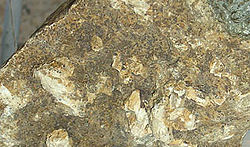Tissue engineering is a biomedical engineering discipline that uses a combination of cells, engineering, materials methods, and suitable biochemical and...
115 KB (14,048 words) - 02:57, 4 May 2025
Muscle tissue engineering is a subset of the general field of tissue engineering, which studies the combined use of cells and scaffolds to design therapeutic...
39 KB (4,760 words) - 03:27, 9 April 2025
Tissue engineering of oral mucosa combines cells, materials and engineering to produce a three-dimensional reconstruction of oral mucosa. It is meant...
17 KB (2,133 words) - 20:26, 5 December 2024
The Journal of Tissue Engineering is a peer-reviewed open-access medical journal that covers research on tissue engineering. Its editors-in-chief are Hae-Won...
2 KB (70 words) - 11:56, 26 April 2023
Tissue Engineering and Regenerative Medicine International Society is an international learned society dedicated to tissue engineering and regenerative...
17 KB (1,062 words) - 08:01, 12 February 2025
The rapid development in the multidisciplinary field of tissue engineering has resulted in a variety of new and innovative medicinal products, often carrying...
6 KB (772 words) - 18:32, 6 February 2024
and reoperation. Thus, in situ (in its original position or place) tissue engineering of heart valves serves as a novel approach that explores the use creating...
29 KB (3,690 words) - 18:53, 4 September 2023
Neural tissue engineering is a specific sub-field of tissue engineering. Neural tissue engineering is primarily a search for strategies to eliminate inflammation...
37 KB (4,696 words) - 11:23, 24 January 2025
Amylopectin (section Tissue Engineering)
Sander C.G. (1 February 2022). "The Use of Fibers in Bone Tissue Engineering". Tissue Engineering Part B: Reviews. 28 (1): 141–159. doi:10.1089/ten.TEB.2020...
33 KB (3,879 words) - 18:33, 18 February 2025
biological tissue, enabling higher resolution imaging and improved accuracy in procedures such as laser surgery and retinal imaging. Tissue engineering, like...
61 KB (6,351 words) - 18:41, 15 May 2025
Antibiotic-Antimycotic (section Tissue engineering)
bioreactors. The ability to isolate cell types is an important component of tissue engineering. In order to prevent contamination during seeding of human fibroblasts...
4 KB (428 words) - 20:03, 8 August 2024
which includes organ engineering, tissue engineering, protein engineering, and genetic engineering. The field of cellular engineering is gaining more traction...
15 KB (1,658 words) - 07:09, 20 January 2025
problems at the interface of living neural tissue and non-living constructs. The field of neural engineering draws on the fields of computational neuroscience...
41 KB (4,964 words) - 03:43, 14 April 2025
Biomedical engineering: application of engineering principles and design concepts to medicine and biology for healthcare purposes. Tissue engineering Neural...
16 KB (1,619 words) - 22:49, 29 April 2025
Biomaterial (redirect from Biomaterials Engineering)
replace a tissue function of the body) or a diagnostic one. The corresponding field of study, called biomaterials science or biomaterials engineering, is about...
52 KB (5,931 words) - 20:59, 26 April 2025
Artificial ligament (section Tissue engineering)
ligament has been utilized extensively in clinical applications. Tissue engineering is a growing area of research which aims to regenerate and restore...
20 KB (2,301 words) - 22:38, 22 July 2024
Charles Vacanti (section Tissue engineering)
Charles Alfred "Chuck" Vacanti (born 1950) is a researcher in tissue engineering and stem cells and the Vandam/Covino Professor of Anesthesiology, Emeritus...
24 KB (2,346 words) - 21:14, 30 August 2024
tissue is one of the four primary types of animal tissue, a group of cells that are similar in structure, along with epithelial tissue, muscle tissue...
18 KB (1,633 words) - 19:39, 10 May 2025
Cell and Tissue Research presents regular articles and reviews in the areas of molecular, cell, stem cell biology and tissue engineering. In particular...
3 KB (213 words) - 13:27, 6 September 2024
Nanofabrics (section Tissue Engineering)
textile manufacturing and areas of medicine such as drug delivery and tissue engineering. A fiber that has a width of less than 1000 nanometers (1000 nm or...
15 KB (1,538 words) - 20:55, 30 October 2023
Arginylglycylaspartic acid (section Tissue engineering)
tumor-targeted nanoparticles. Further, RGD is widely used in tissue engineering to promote tissue regeneration. Conventional drug delivery methods, such as...
36 KB (3,744 words) - 23:18, 5 February 2025
Soft tissue connects and surrounds or supports internal organs and bones, and includes muscle, tendons, ligaments, fat, fibrous tissue, lymph and blood...
17 KB (2,106 words) - 20:05, 29 March 2025
Embryonic stem cell (section Tissue engineering)
transplantation or tissue engineering." In tissue engineering, the use of stem cells are known to be of importance. In order to successfully engineer a tissue, the...
73 KB (8,675 words) - 22:55, 5 May 2025
as in vitro cell and tissue substrates. This early use of electrospun fibrous lattices for cell culture and tissue engineering showed that various cell...
14 KB (1,711 words) - 07:02, 26 April 2025
Nanomedicine (section Tissue engineering)
Nanotechnology may be used as part of tissue engineering to help reproduce, repair, or reshape damaged tissue using suitable nanomaterial-based scaffolds...
53 KB (6,142 words) - 11:06, 10 May 2025
biomedical applications including wound healing, drug delivery and tissue engineering. Due to its specific intermolecular hydrogen bonding network, dissolving...
26 KB (2,789 words) - 11:49, 29 March 2025
and vaginal routes. Thiomers show also potential in the field of tissue engineering and regenerative medicine. Various thiomers such as thiolated chitosan...
31 KB (3,609 words) - 16:42, 9 October 2024
for 3D printing hydrogel bioinks, particularly for applications in tissue engineering, 3D bioprinting, and regenerative medicine. GelMA is derived from...
4 KB (453 words) - 18:39, 5 May 2025
chemical similarity to hard tissue. In the future, there are possibilities for using nano-hydroxyapatite for tissue engineering and repair. The main and...
38 KB (4,038 words) - 21:34, 23 April 2025
Tissue clearing refers to a group of chemical techniques used to turn tissues transparent. By turning tissues transparent to certain wavelengths of light...
19 KB (2,064 words) - 03:41, 4 January 2025














